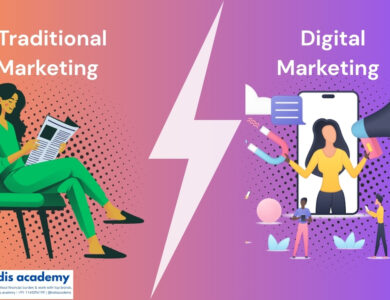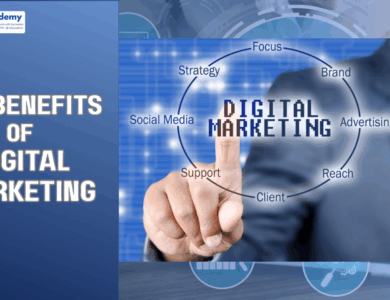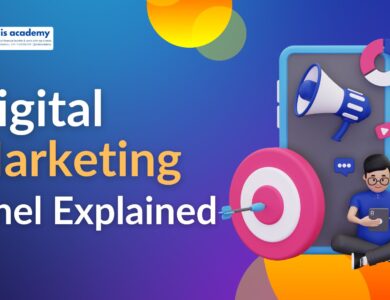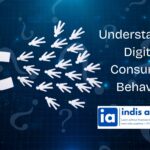Growth Hacking vs Digital Marketing: Which One Drives Faster Results?
Discover the key differences between growth hacking and digital marketing. Learn which approach is better for rapid growth, brand building, and long-term success.
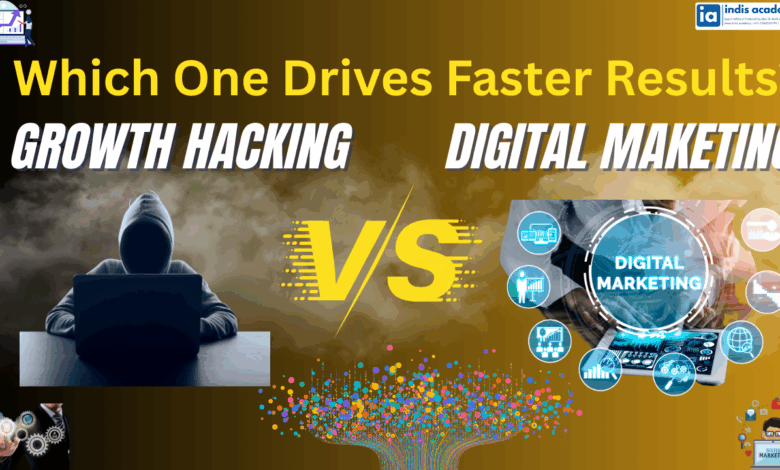
Growth Hacking vs Digital Marketing: Which One Drives Faster Results?
In a world obsessed with speed, scale, and startups, businesses are constantly looking for ways to grow—and fast. That’s where the buzz around Growth Hacking and Digital Marketing comes in. These two terms are often used interchangeably, but they serve very different purposes and involve unique approaches.
So, which one delivers faster results? Is growth hacking just a fancy version of marketing, or does it unlock something traditional digital strategies can’t? In this detailed comparison, we’ll break down the differences, benefits, and use cases for both so you can decide which one aligns better with your goals.
1. What Is Growth Hacking?
Definition
Growth hacking is a lean, aggressive, and often unconventional approach to growing a business as quickly as possible. Coined by Sean Ellis in 2010, the term was originally used to describe a mindset adopted by early-stage startups that couldn’t afford traditional marketing but needed to scale fast.
The core idea? Do whatever it takes to grow. That could mean tweaking product features, running A/B tests, using data in smart ways, or even finding loopholes in existing platforms (ethically, of course).
Key Characteristic

- Data-driven: Every action is tested and measured.
- Agile and experimental: Strategies are flexible and rapidly changed.
- Low-cost, high-impact: Minimal budget, maximum effect.
- Product-focused: Often merges marketing with product development.
Think of Dropbox’s famous referral program. It wasn’t just a campaign—it was a built-in product feature designed to supercharge growth. That’s growth hacking in action.
2. What Is Digital Marketing?
Definition
Digital marketing is a structured and strategic approach to promoting a brand, product, or service using online channels. It covers everything from SEO and social media to email marketing and paid advertising.
Unlike growth hacking, which is about quick wins and experimental tactics, digital marketing focuses on consistent, long-term growth. It’s what established companies use to build brand authority, maintain customer relationships, and drive conversions in a sustainable way.
Key Characteristics
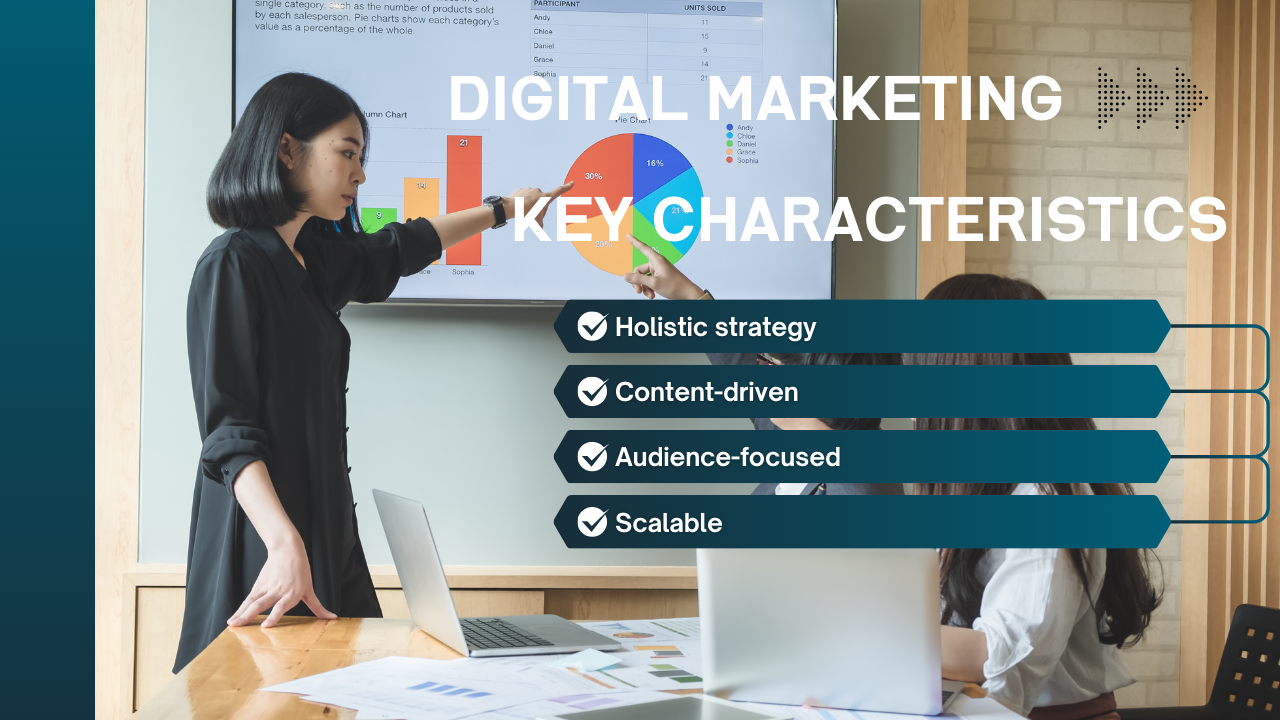
- Holistic strategy: Involves multiple channels working together.
- Content-driven: Blogs, videos, social posts, and emails play a major role.
- Audience-focused: Detailed targeting using demographic and behavioral data.
- Scalable: Can grow steadily with larger budgets and teams.
Whether you’re trying to rank higher on Google or run a retargeting campaign on Facebook, digital marketing provides the structure and scalability many businesses need to thrive online.
3. Key Differences Between Growth Hacking and Digital Marketing
While both aim to grow a business, their methods, mindsets, and outcomes differ significantly. Here’s a side-by-side comparison:
| Feature | Growth Hacking | Digital Marketing |
|---|---|---|
| Goal | Rapid, scalable growth | Long-term brand and customer growth |
| Approach | Experimental, iterative | Structured, strategy-based |
| Focus | Conversions and user acquisition | Awareness, engagement, conversion |
| Tools Used | A/B testing, analytics, viral loops | SEO, social media, ads, email marketing |
| Timeline | Short bursts of fast results | Gradual, compounding returns |
| Team | Cross-functional (marketing + dev) | Dedicated marketing team |
| Budget | Low-budget, high ROI | Varies, often higher budgets |
| Risk Level | High (test-heavy) | Medium to low (measured planning) |
Both have their strengths and weaknesses depending on the stage and type of your business.
4. Common Tools & Techniques
Growth Hacking Tactics
Growth hackers rely on quick and clever tactics to spark user growth:
- Referral loops (e.g., Dropbox and PayPal)
- Gamification (reward-based user actions)
- Waitlists and invite-only access to build exclusivity
- Landing page experiments with A/B testing
- Scraping and automation for outreach
- Product-led growth (where the product markets itself)
Digital Marketing Tools
Digital marketers use a wide toolkit for brand building and lead generation:
- SEO tools (Ahrefs, SEMrush, Ubersuggest)
- Email marketing platforms (Mailchimp, ConvertKit, HubSpot)
- Google Analytics / GA4 for user behavior tracking
- PPC platforms (Google Ads, Meta Ads)
- Content creation tools (Canva, Grammarly, Jasper)
- Social media management (Hootsuite, Buffer, Later)
5. Use Cases: When to Use Which Strategy
For Startups and MVPs
If you’re launching a minimum viable product and need fast user feedback or traction, growth hacking is the way to go. It helps startups scale quickly without needing big budgets.
For Established Businesses
If you’re a medium to large business focusing on branding, customer retention, and long-term scalability, digital marketing is more sustainable and measurable.
Hybrid Approach
The best-case scenario? Combine both. Start with growth hacking for launch and validation, then layer in digital marketing strategies to scale sustainably.
6. Which One Drives Faster Results?
The honest answer: It depends.
- Growth hacking is designed to deliver fast results through rapid testing and iteration. It’s ideal when you need traction yesterday.
- Digital marketing, on the other hand, builds momentum over time but delivers sustainable traffic and conversions with less volatility.
Here are a few scenarios:
- Launching a new app? → Use growth hacking to acquire early users quickly.
- Running an e-commerce store? → Use digital marketing for ads, SEO, and email flows.
- Offering a SaaS product? → Use both: growth hacks for onboarding + digital marketing for lead generation.
7. Challenges and Pitfalls of Both
Growth Hacking Challenges
- Hard to scale beyond a certain point
- Often lacks brand-building strategies
- Can come across as “hacky” or inauthentic
Digital Marketing Pitfalls
- Takes time to see significant results
- Can be resource-heavy and slow-moving
- May lack agility without regular optimization
8. Final Verdict: Which Should You Choose?
If you’re a startup looking for fast feedback, aggressive user acquisition, and growth on a shoestring budget, growth hacking is the route to explore.
If you’re an established business aiming to build authority, generate leads, and create long-term brand value, digital marketing is the more sustainable, reliable path.
Most modern businesses will benefit from a hybrid approach—hacking for speed, marketing for scale.
Conclusion
In the battle of growth hacking vs digital marketing, there’s no one-size-fits-all winner. Each has its place, strengths, and ideal use cases.
Growth hacking shines when speed is essential and resources are limited. Digital marketing thrives in structured, long-term campaigns where consistency matters.
Ultimately, success lies in understanding your goals and audience—then choosing the tools, mindset, and methods that help you achieve them.
Want the best of both worlds? Start with smart experiments and scale with strategy. That’s how modern growth really works.
Learn more About Digital Marketing:
- What Is Digital Marketing? Definition, Basics & How It Works
-
Want a Career in Digital Marketing? Here’s Everything You Need to Know

